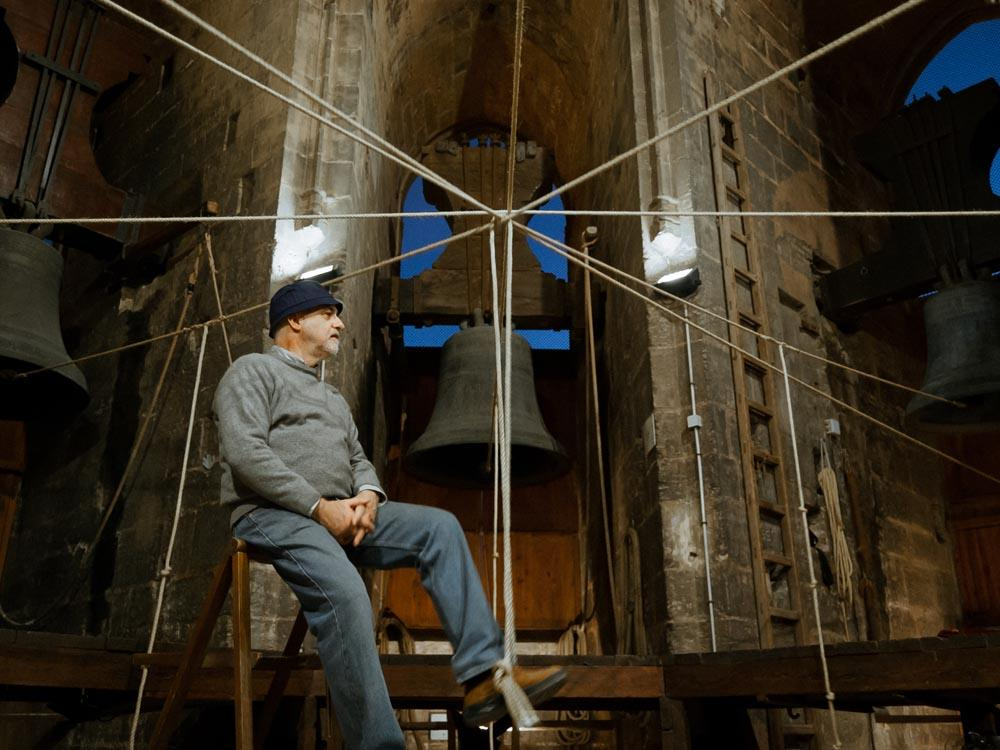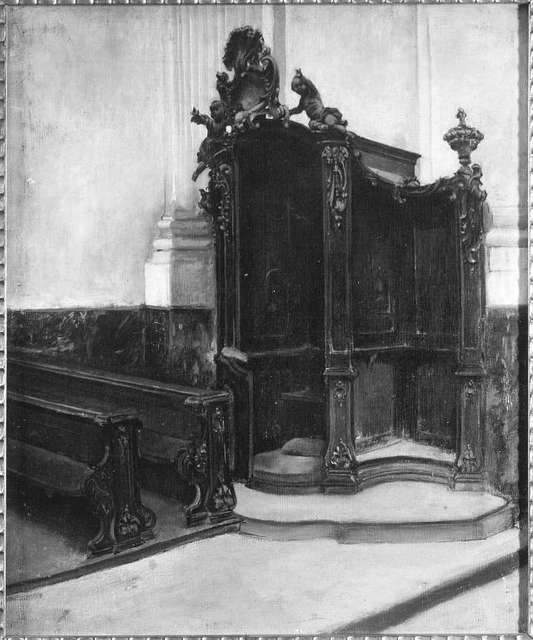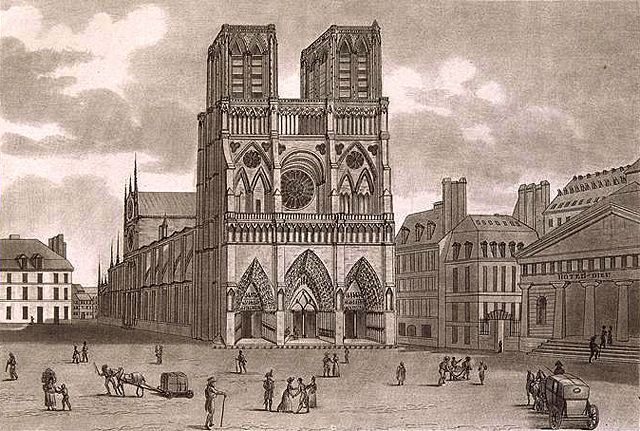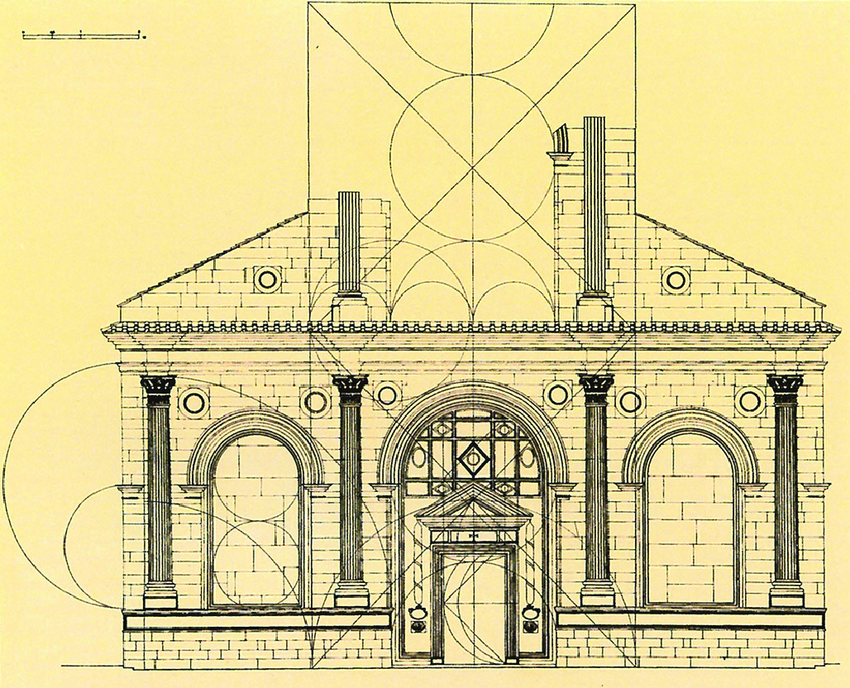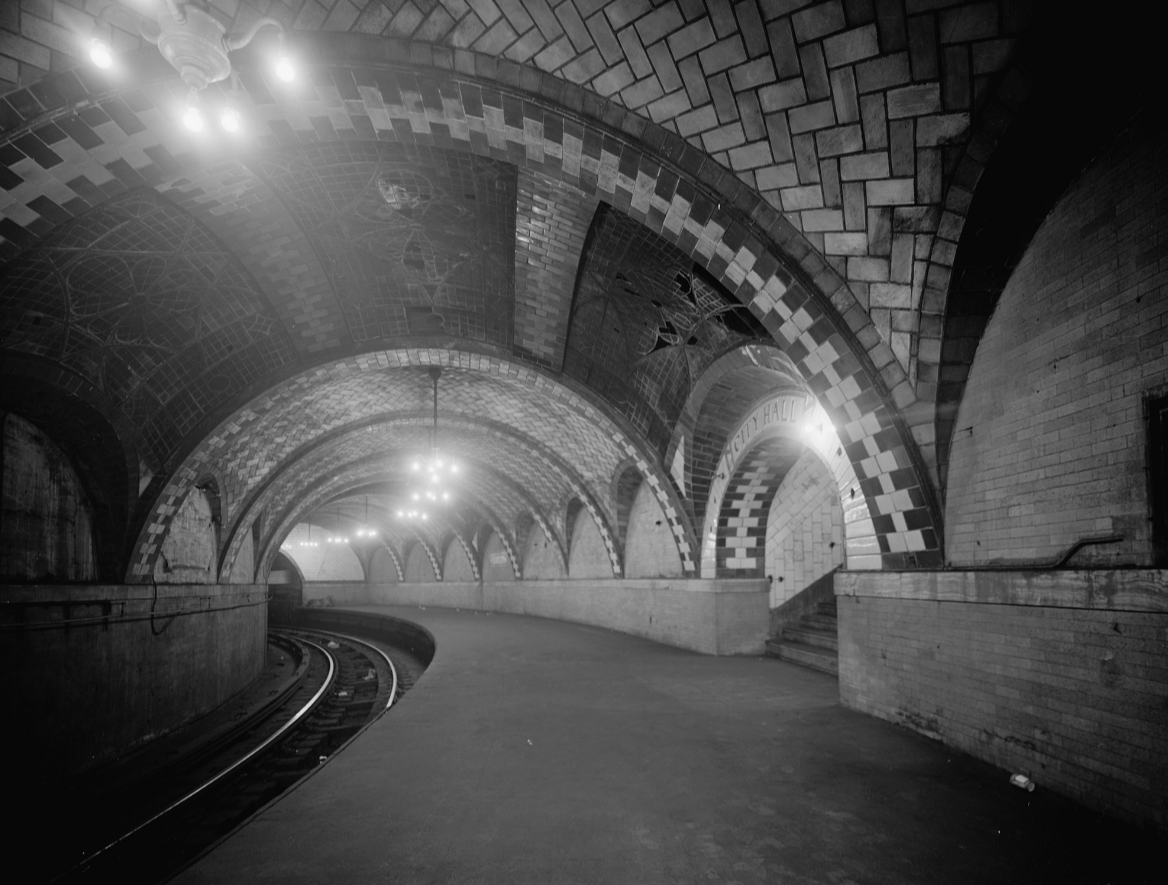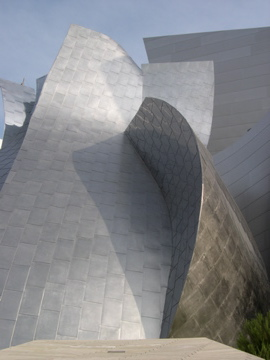created 2025-06-08, & modified, =this.modified
tags:y2025musicarchitecturenexus
rel: Architecture in the Age of Printing by Mario Carpo Art-Science - Alloys by Iannis Xenakis Buildings for Music by Michael Forsyth
Motivating thoughts: thinking about Campanology - Bell Ringing and the structures of ornate cathedrals (unsuitable to dubstep?). The musical ringing of bells directly affected the structure in terms of compositional elements and ability to cause structural damage. The church is a musical building, does it look musical?
Thought
I guess the question is more about structure and math, but I think it’s more interesting at the moment to hone in on specifically sound influence and how that manifests.
What does a society that is completely musically forward in architecture look like? (What I mean is right now you’ll find hundreds of variants of speakers and headphones etc, all music devices – many of these deviate in design because of aesthetics that don’t consider fully the implications of sound i.e. bunny ears on headphones not being functional ears). Imagine a society that is alien and perhaps blind? or hyper focused on sound. They have a new style of architecture that is wholly influenced in sound, attempting optimally. The way they walk has acoustic properties to the path. Like a nightingale floor.
Nightingale Floor (uguisubari)
Dry boards naturally creak under pressure, but these floors were built in a way that the flooring nails rub against a jacket or clamp, causing chirping noises.
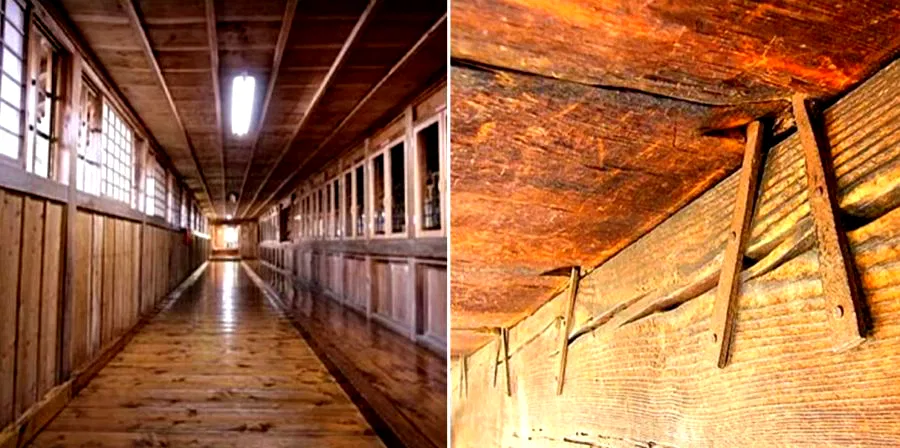
An information sign in Nijō castle states that “The singing sound is not actually intentional, stemming rather from the movement of nails against clumps in the floor caused by wear and tear over the years”. Legend has it that the squeaking floors were used as a security device, assuring that no one could sneak through the corridors undetected.
What other ways does music or musical practice affect the structure of our buildings? (like loudspeakers punctuating the ceilings of a shopping center (or outdoors to mask sounds, deter rough sleepers) – imagining music clubs as specifically designed with single, obscuring door entry that isolate the music.) Does isolated music listening transfer to the home?
Thought
Whenever the house is gutted, as result of home renovation the space stays part of the house, but it also becomes part not of the house. The acoustic properties are different. I remember this as a kid getting my bathroom replaced. All of the tiny randomly placed ceramic tiles, whose placement I had grown familiar with were replaced.
The room was sunken in, and immediately cold during the work. Layers of past original floors even I was not aware of were exposed.
The Nightclub.
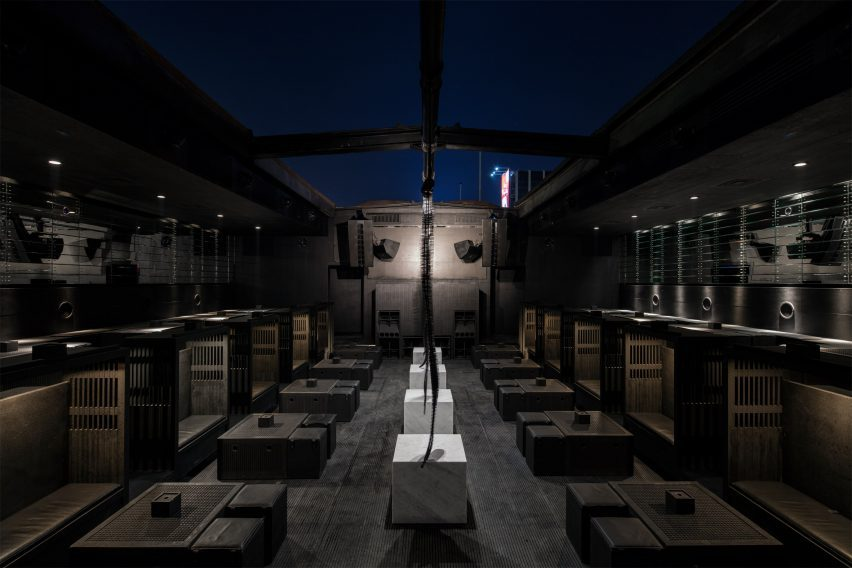
An ornate cathedral has a mathematical style to it.
Architecture has elements of abstract rhythm and proportion, like music. Maybe this is what I am getting at. (Now I’m thinking of the nature of something that is produced in a factory, as part of mass production – this identical nature, like a modular Lego brick, would forever predispose to a type of rhythm of the end product. What I mean is a “brick” has a different musical/building affordance than a stone. It seems to me predisposed for regularity.)
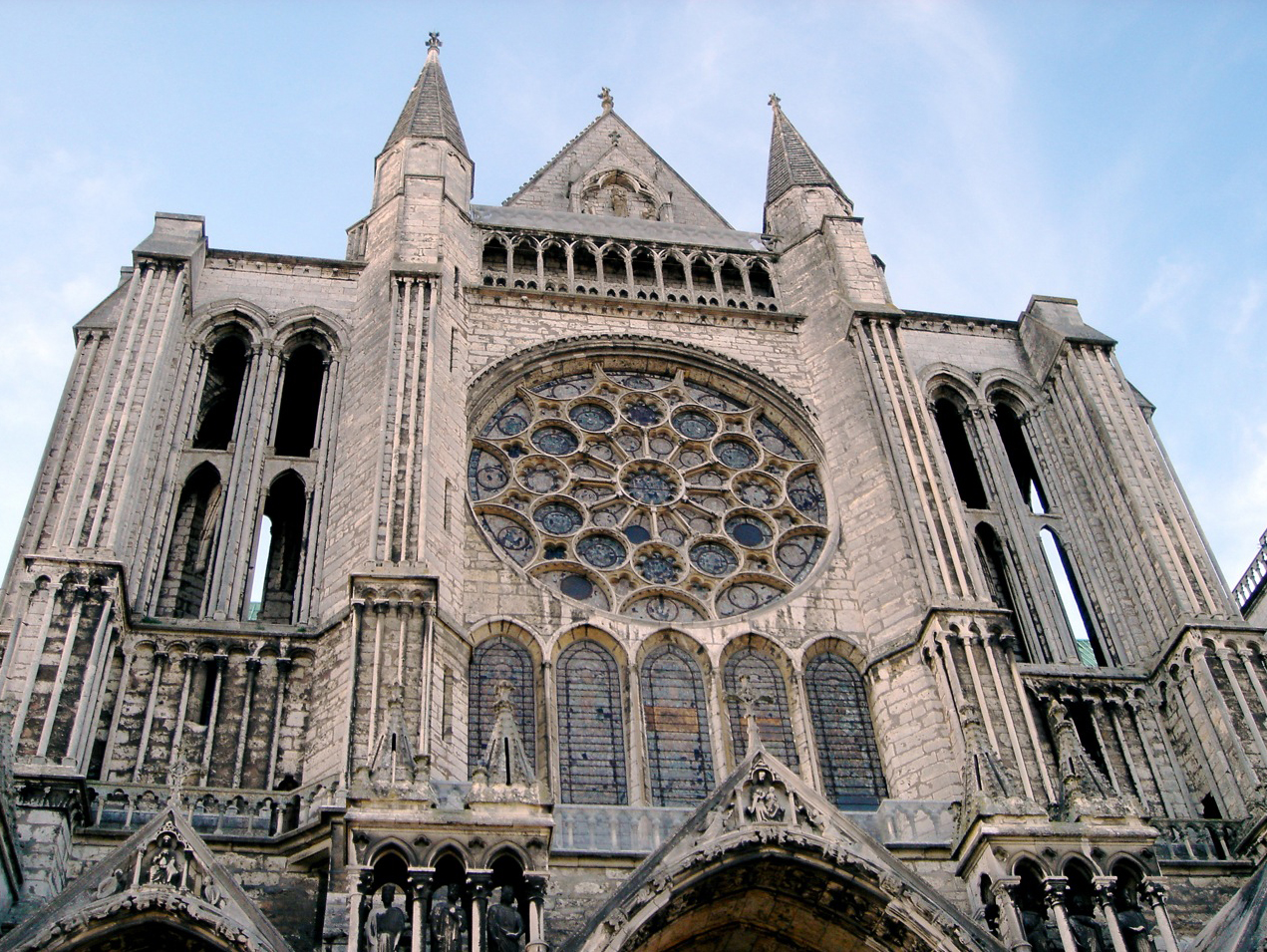
I stumble on this quote from Goethe
“Music is liquid architecture; Architecture is frozen music.”
The actual quote seems,
“I’ve found a page among my papers,” said Goethe, “where I describe architecture as frozen music. And there’s something in that, you know; the state of mind produced by architecture is similar to the effect of music.”
Quote
When I see architecture that moves me, I hear music in my inner ear - Frank Lloyd Wright
It seems like if composing for these spaces, your methods would change, versus in a small parlor room.
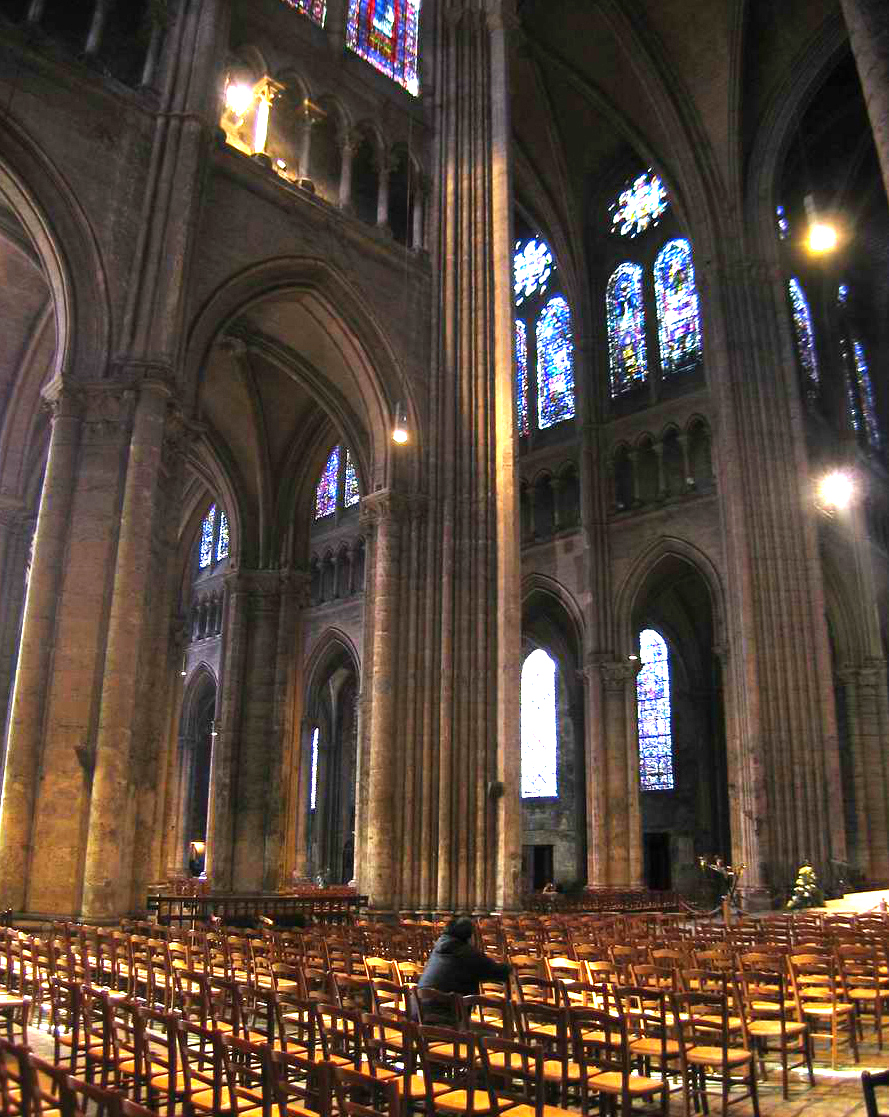
Finding further information on this thought in Music In Architecture: Lest We Forget
By the time of the rise of the concert hall in the nineteenth century, with the popularity of professional solo playing and new instrument technologies, performers, too, had to make choices resulting from a shift beyond small music rooms, not particularly designed for music-making, to the echoing resonance of large spaces where the acoustic could make “both harmony and melody unintelligible.
For St. Augustine music and architecture were sisters: “the architecture reflects the eternal harmony and music is their echo”
The notebook of Villard de Honnecourt (published in 1240) shows the musical ratios in the proportions of the nave elevation of Reims cathedral
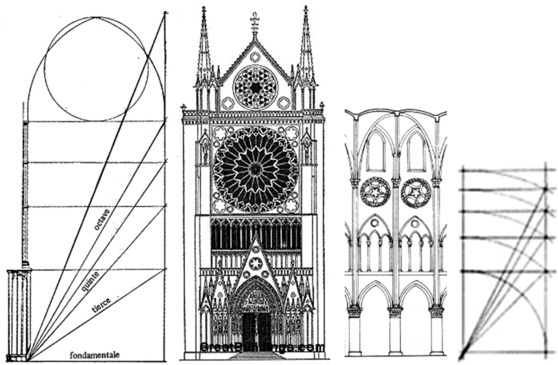
Paper
Via this paper, which views Notre Dame as semiotically a hymn of architecture.
Musical Roads
Musical roads are sections of roads where when driven over the driver experiences a tactile, audible rumbling.

Each note is produced by varying the spacing of strips in, or on, the road. For example, an E note requires a frequency of around 330 vibrations a second. Therefore, strips 2.4 in (61 mm) apart will produce an E note in a vehicle travelling at 45 mph (72 km/h).
The historical antecedent was rumble strips from the 1950s, which would cause a distinct humming sound when driven over by drivers presumably not paying attention to the road.
Japan boasts at least thirty musical roads, featuring tunes like the theme from the anime Neon Genesis Evangelion and “Always with Me” from the film Spirited Away. These roads are predominantly created for tourism purposes.
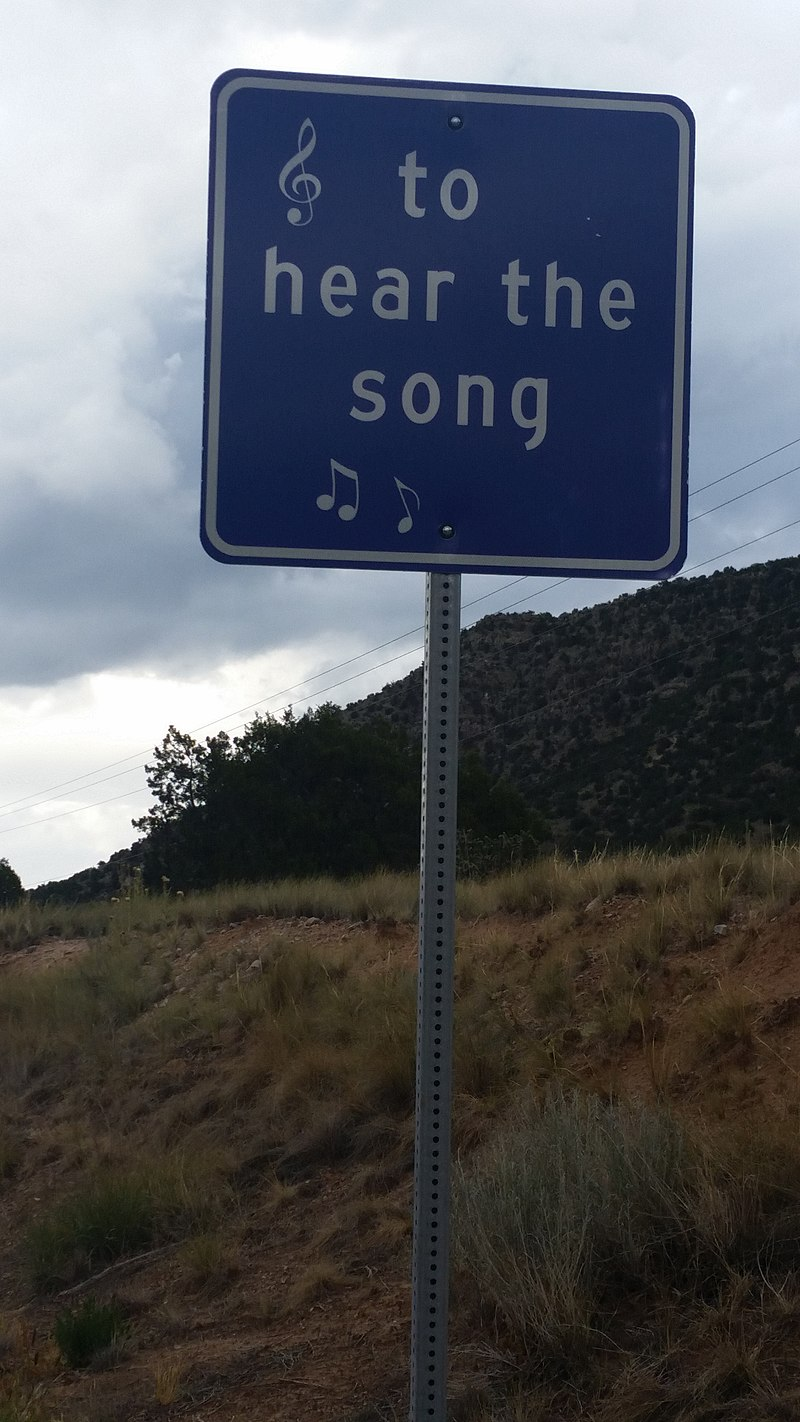
Listening Booths
Thinking of isolated listening practice, the record store and listening booths come to mind immediately.

Structurally these are intentionally isolating, and the opposite of a cathedral experience.

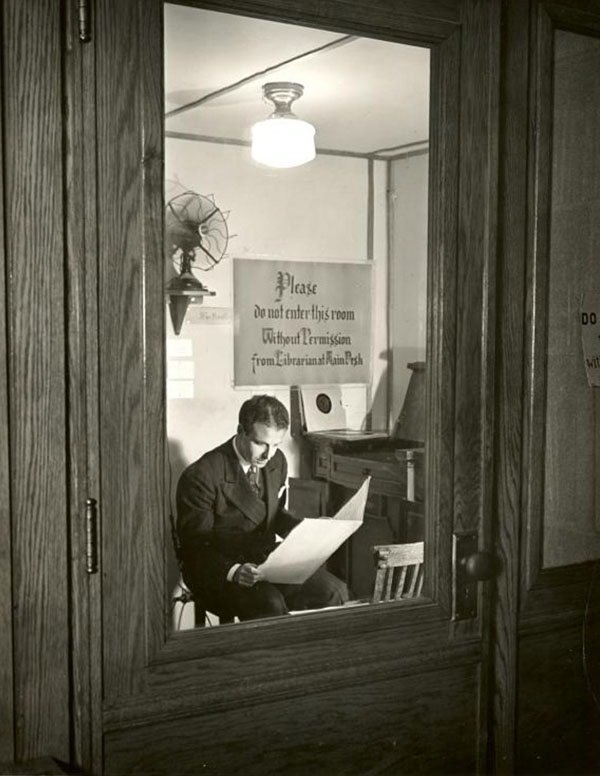
What about personal headphones? Walking the street to your own isolated soundtrack.
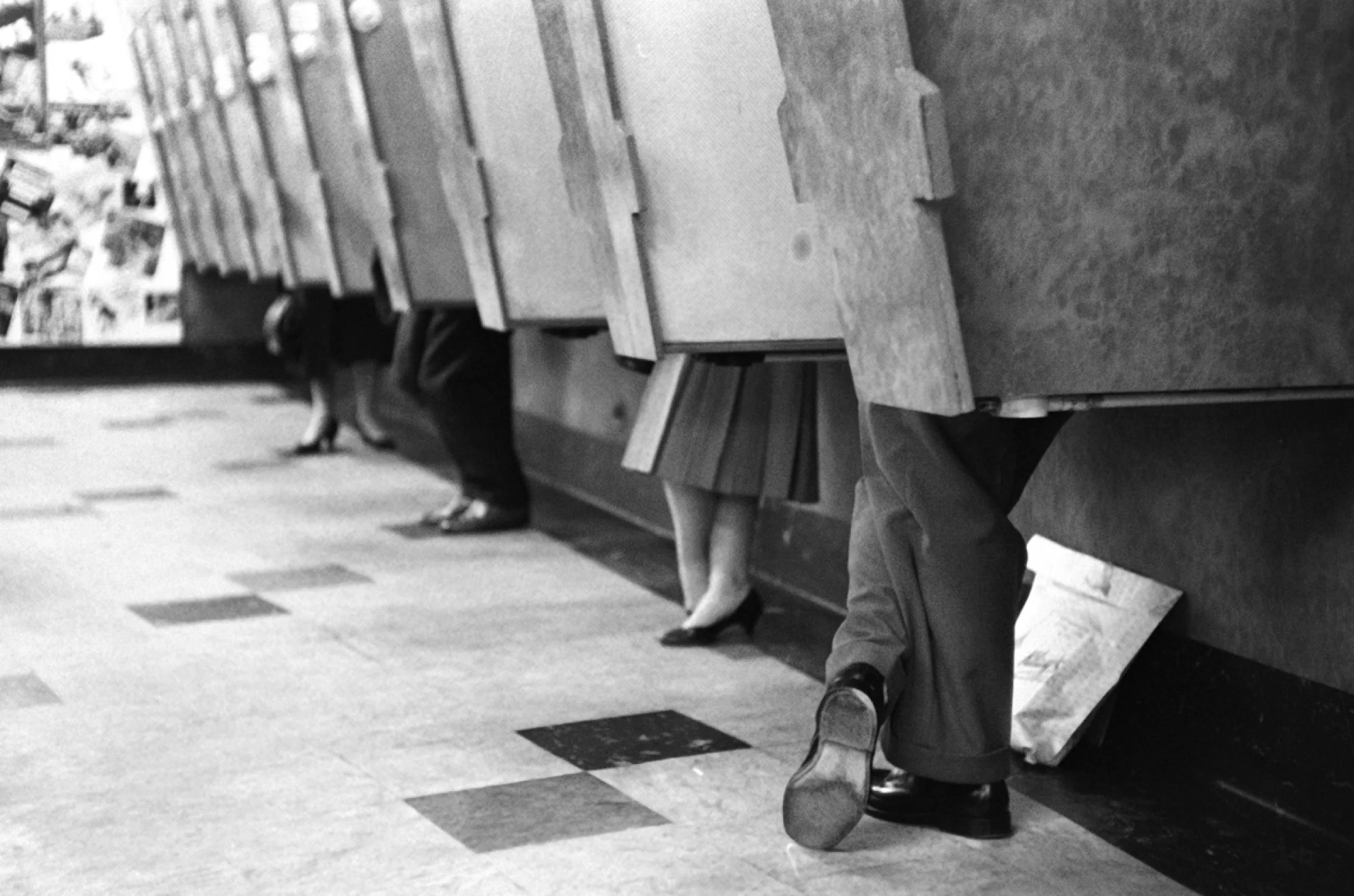
Confessionals
I’m trying to maintain some cohesion to the topic here (thinking purely of sound-influenced objects might be too broad) but the religious Confessional comes to mind.
The device itself is a listening device, but for isolation and secrecy. The Seal of Confession in the Catholic church is the absolute duty of the priests or anyone who happens to hear a confession, not to disclose anything learned from the penitents.
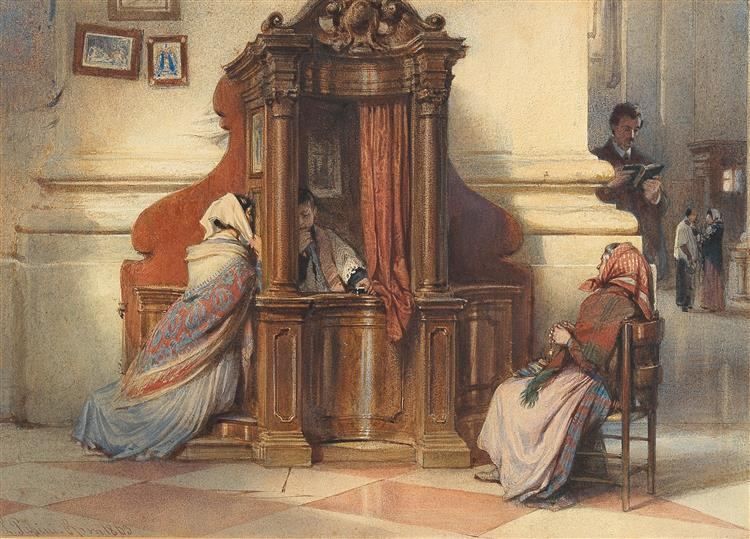
The confessional is usually a wooden structure, with a centre compartment—entered through a door or curtain—where the priest sits, and on each side there is a latticed opening for the penitents to speak through and a step on which they kneel. By this arrangement the priest is hidden, but the penitent is visible to the public. Confessionals sometimes form part of the architectural scheme of the church.
Looking at the vatican site on confessional information after hearing they are being removed from churches in place of confessional rooms.
Can. 964 §1. The proper place to hear sacramental confessions is a church or oratory. §2. The conference of bishops is to establish norms regarding the confessional; it is to take care, however, that there are always confessionals with a fixed grate between the penitent and the confessor in an open place so that the faithful who wish to can use them freely. §3. Confessions are not to be heard outside a confessional without a just cause.
Anechoic Chamber
Meaning non–reflective or without echoes. A person exclusively hears direct sounds.

A free field space is a place where no sound reflections can occur.
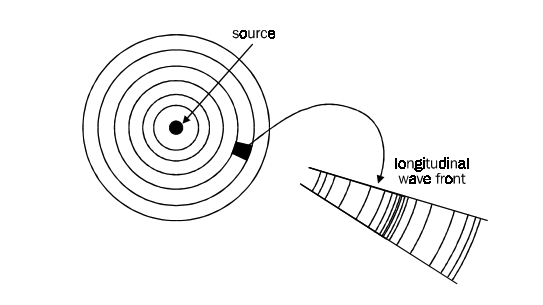
PA Systems
The ancient Greeks used megaphones or cones used for projecting the voice to a large audience. I
In 1910, the Automatic Electric Company of Chicago, Illinois, already a major supplier of automatic telephone switchboards, announced it had developed a loudspeaker, which it marketed under the name of the Automatic Enunciator.

In August 1912 a large outdoor installation was made at a water carnival in Chicago. 72 loudspeakers were strung in pairs at 12 meter intervals around the docks, spanning 800 meters of grandstands. The system was used to announce race reports, carry speeches and provide music between races.
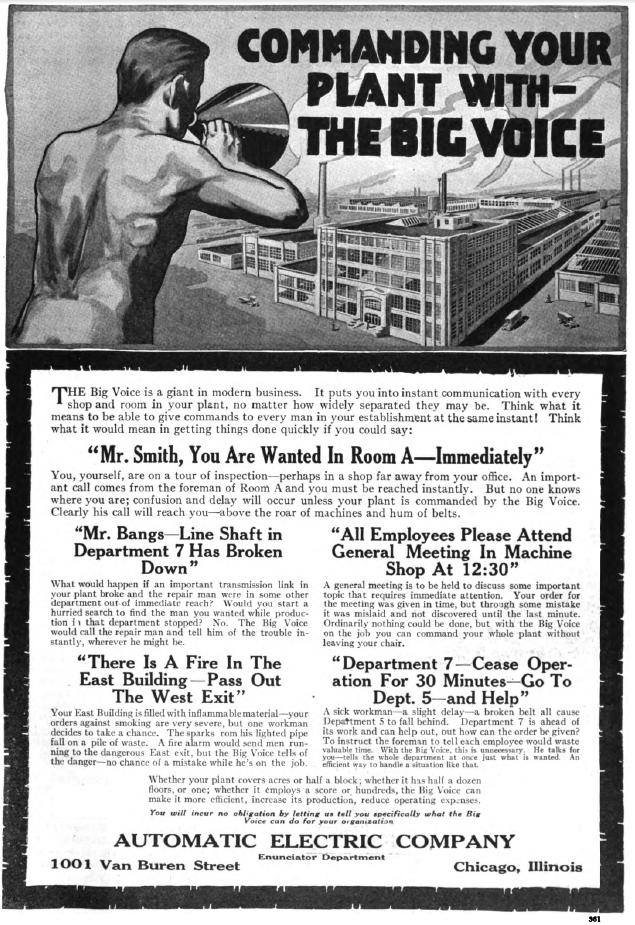
Listening Station
Beyond a booth for listening, it occurs to me that a building can serve a listening device in itself.
Highly sensitive eavesdropping, such as the Eiffel Tower in the WWI which as used to intercept radio telegraphy.
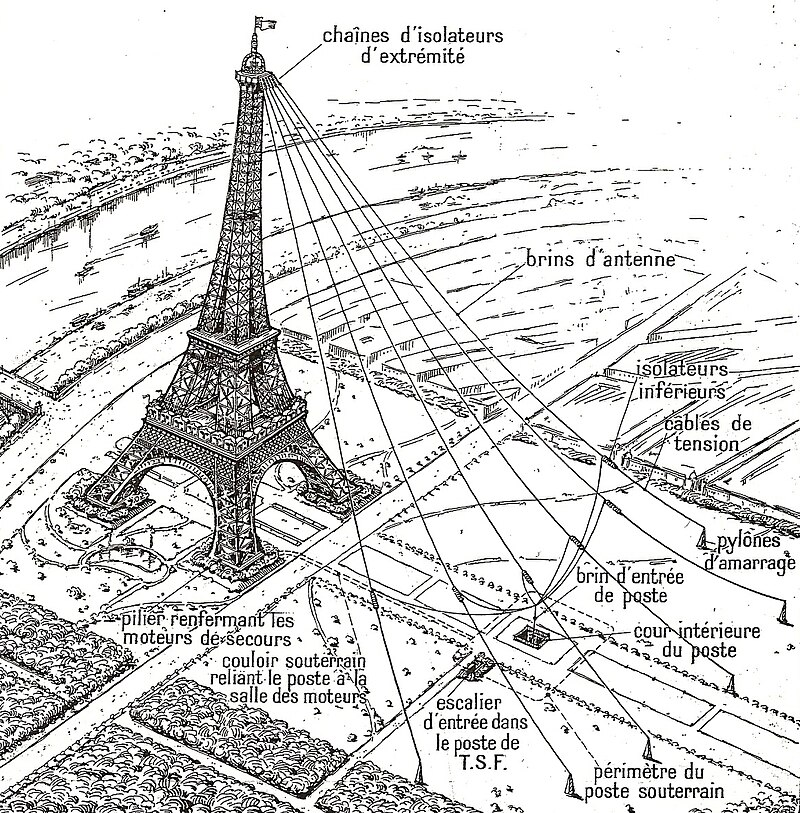
Similarly satellite buildings have the structural form specific to data collection, listening.

Ground stations pointing towards space.
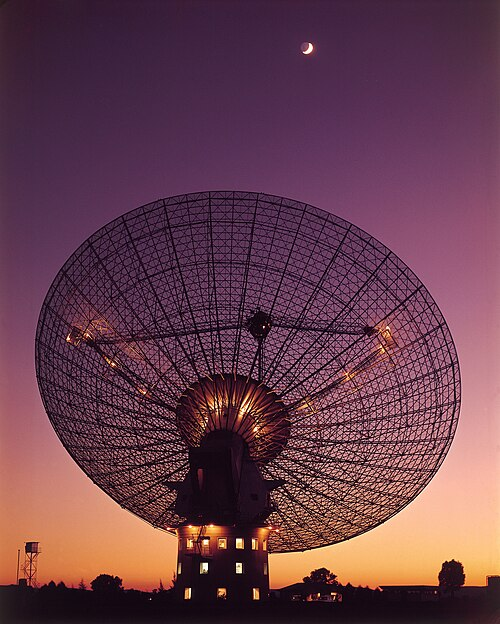
Notre-Dame
There are also interesting parallels between major formal and structural developments in music history and the emergence of new, monumental works of architecture. Consider the Cathedral of Notre Dame and the rise of Notre Dame polyphony, a compositional style in which two or more independent voices sound together. In the 12th century, architectural ornament evolved to create a heightened feeling of grandeur in Gothic cathedrals during services, and the music of the time reflected this affective sensibility. The music became more complex as musicians worked under the cathedral’s patronage.
Introduction of polyphony, John of Salisbury (1120–1180) found distasteful:
Bad taste has, however, degraded even religious worship, bringing into the presence of God, into the recesses of the sanctuary a kind of luxurious and lascivious singing, full of ostentation, which with female modulation astonishes and enervates the souls of the hearers. When you hear the soft harmonies of the various singers, some taking high and others low parts, some singing in advance, some following in the rear, others with pauses and interludes, you would think yourself listening to a concert of sirens rather than men, and wonder at the powers of voices … whatever is most tuneful among birds, could not equal. Such is the facility of running up and down the scale; so wonderful the shortening or multiplying of notes, the repetition of the phrases, or their emphatic utterance: the treble and shrill notes are so mingled with tenor and bass, that the ears lost their power of judging. When this goes to excess it is more fitted to excite lust than devotion; but if it is kept in the limits of moderation, it drives away care from the soul and the solicitudes of life, confers joy and peace and exultation in God, and transports the soul to the society of angels.
Singing Ringing Tree in Burnley
Designed by architects Mike Tonkin and Anna Liu of Tonkin Liu, the Singing Ringing Tree is a 3-metre (10 ft) tall construction comprising pipes of galvanised steel which harness the energy of the wind to produce a slightly discordant and penetrating choral sound covering a range of several octaves. Some of the pipes are primarily structural and visual elements, while others have been cut across their width enabling the sound. The harmonic and singing qualities of the tree were produced by tuning the pipes according to their length by adding holes to the underside of each.
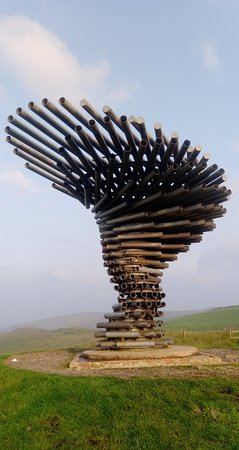
Alberti
rel:Architecture in the Age of Printing by Mario Carpo
Alberti was as accomplished as an architect as he was a humanist, musician, and art theorist.
Architect Leone Battista Alberti (1404-1472), “[I am] convinced of the truth of Pythagoras’ saying, that Nature is sure to act consistently … I conclude that the same numbers by means of which the agreement of sounds affect our ears with delight are the very same which please our eyes and our minds.”
Sound of Construction
While reading Nowhere to Be Found by Bae Suah there’s mention of the sound of construction, which seems like such an obvious example. If I’m framing a building as a song, I’m playfully imagining the sound of construction like the orchestra tuning their instruments without organization.
The construction of every new building is a distinct, chaotic cacophony of the sounds of something assembling. All in the area are made aware of it. Some find this pleasant, with Youtube videos of 10 hours of construction sounds available.
Modular sound barriers might be placed to mitigate sound propagation.
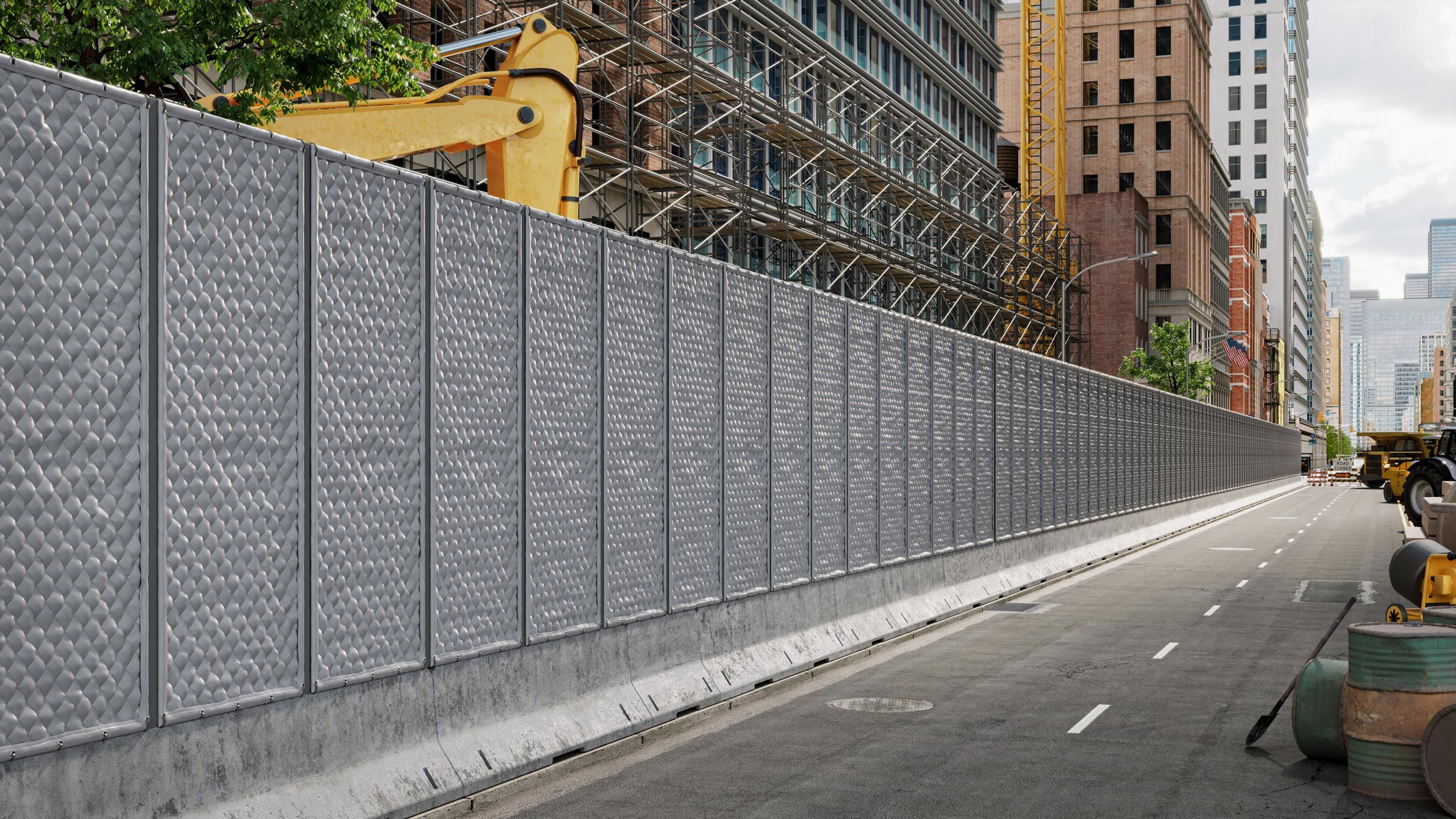
Wallace Clement Sabine and Architectural Acoustics
Wallace (1868-1919) was an American physicist who founded the field of architectural acoustics.
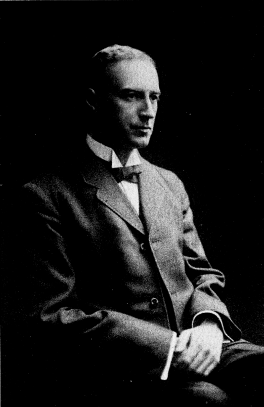 Early in his career (1895), he was tasked with improving the acoustics of the Fogg Lecture Hall in Harvard. He began by comparing how the Lecture Hall differed from other acoustically acceptable buildings, like Sanders Theater.
Early in his career (1895), he was tasked with improving the acoustics of the Fogg Lecture Hall in Harvard. He began by comparing how the Lecture Hall differed from other acoustically acceptable buildings, like Sanders Theater.
For the next several years, Sabine and his assistants spent each night moving materials between the two lecture halls and testing the acoustics. On some nights they would borrow hundreds of seat cushions from the Sanders Theater.
He took thousands of measurements, such as testing the reverberation times of various Oriental rugs, and testing various levels of seat occupancy observing “the body of an average person decreased reverberation time about as much as six seat cushions.”
As part of this study he formally defined reverberation time, establishing a relationship that exists between the quality of the acoustics, the size of the chamber, and the amount of absorption surface present.
Using what he discovered, Sabine deployed sound absorbing materials throughout the Fogg Lecture Hall to cut its reverberation time and reduce the “echo effect.
There are four ways to improve workspace acoustics
- A - Absorb (drapes, carpets, ceiling tiles)
- B - Block (panels, walls, floors, ceiling and layout)
- C- Cover-up, or Control (background sound levels, via masking sounds)
- D - Diffuse (cause the sound energy to spread by radiating in many directions)
Akoustolith
Akoutolith is a porous ceramic material that was patented in collaboration with Rafael Gustavino Jr and Wallace Sabine. It was used to limit acoustic reflection and noise in large vaulted ceilings. The most prevalent use was for speech intelligibility in churches and cathedrals prior to public address systems.
Guastavino vaults used Akoutolith to correct excessive reverberation.
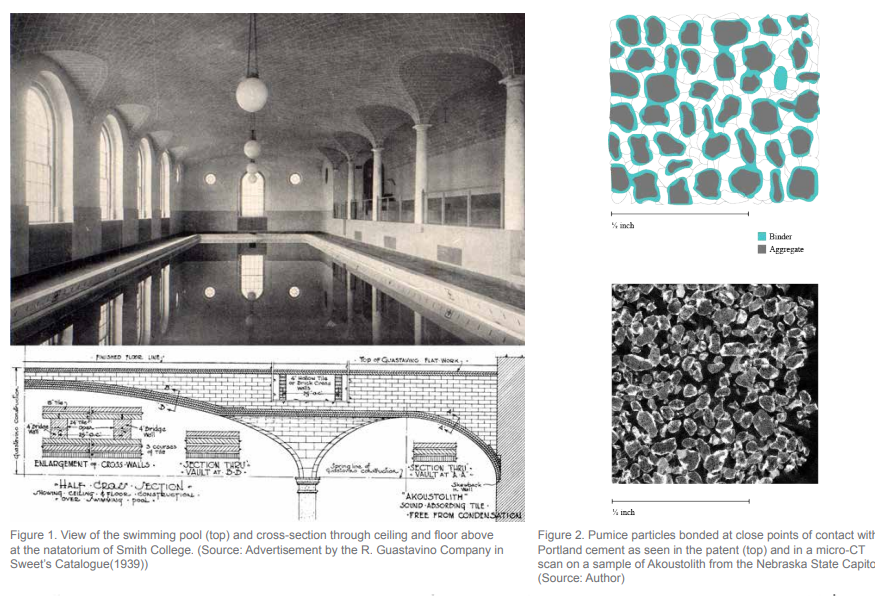
Guastavino Technique
Guastavino vaulting is a technique for constructing robust, self-supporting arches and architectural vaults using interlocking terracotta tiles and layers of mortar to form a thin skin, with the tiles following the curve of the roof as opposed to horizontally (corbelling), or perpendicular to the curve (as in Roman vaulting).
Boston Symphony Hall
The Symphony Hall became one of the first auditoria designed in accordance with scientifically derived acoustical principles, in collaboration with Wallace Sabine.
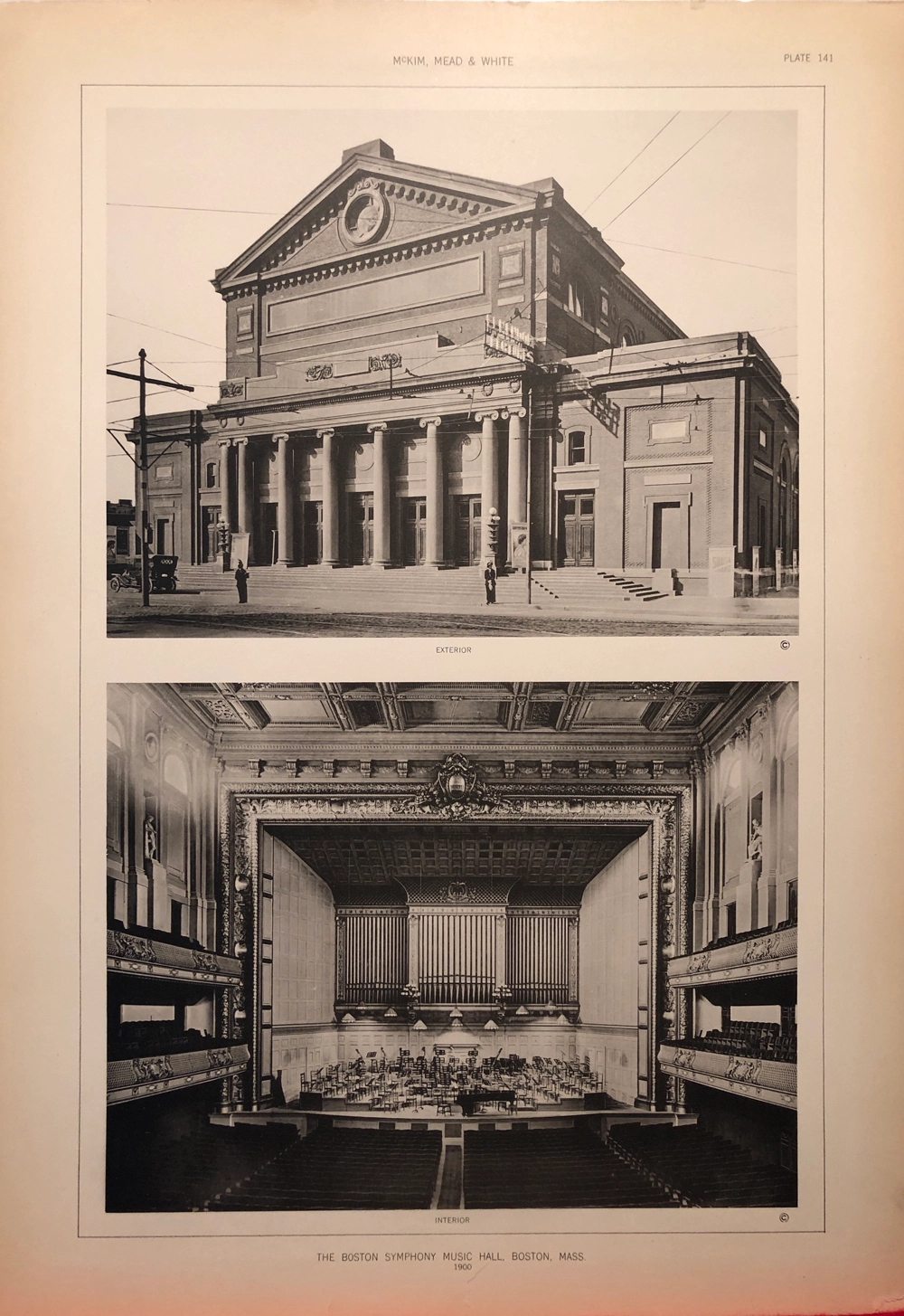 The walls of the stage slope inward to focus the sound. The side balconies are shallow to not trap sound. Around the hall are 16 replica Greek and Roman statues, all in some way relating to music, art or literature.
The walls of the stage slope inward to focus the sound. The side balconies are shallow to not trap sound. Around the hall are 16 replica Greek and Roman statues, all in some way relating to music, art or literature.
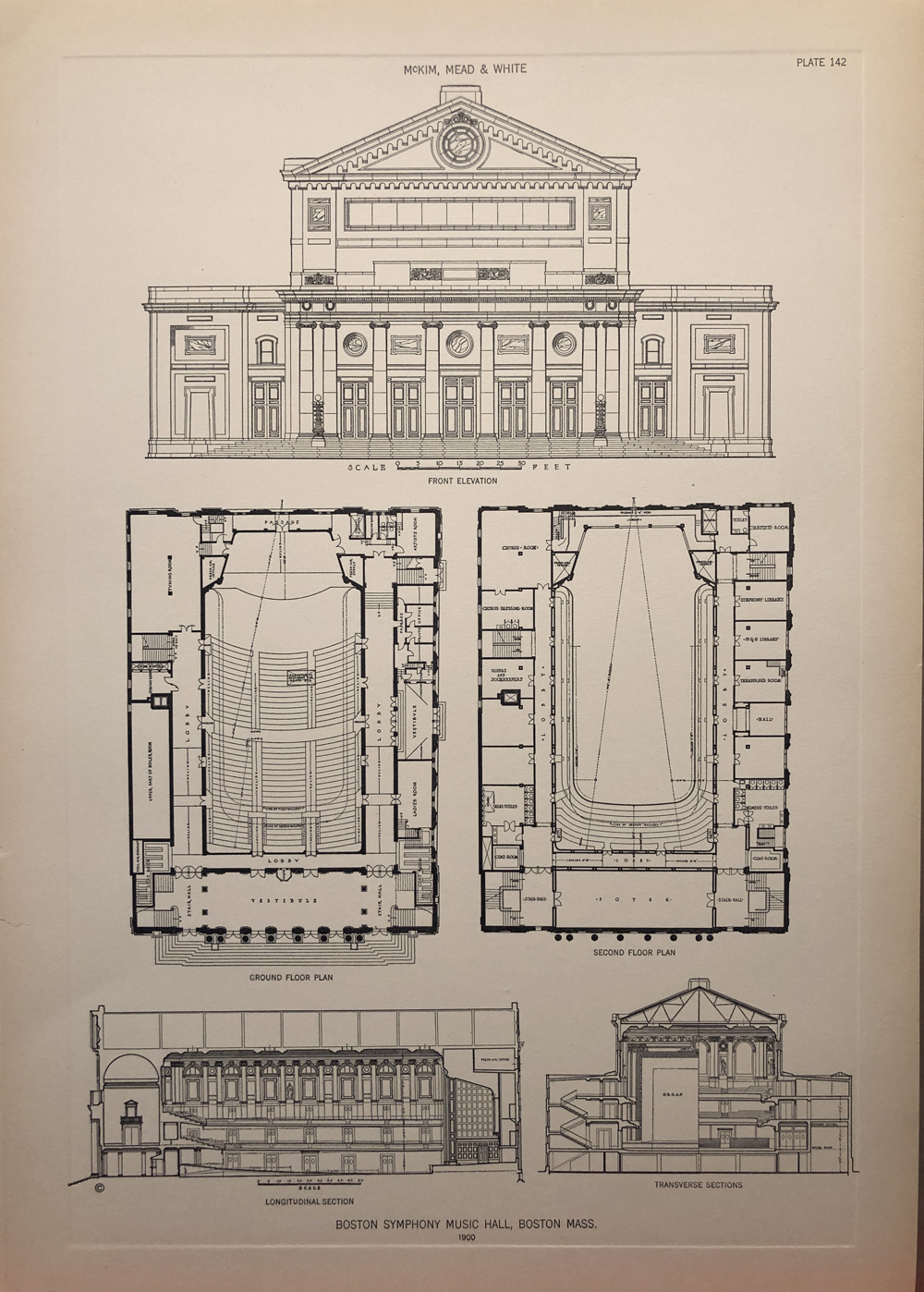
Sabine developed a mathematical formula that enabled him to predict the reverberation time before the building was built, so that an ideal reverberation time of 1.9 to 2.1 seconds could be achieved.
Vineyard Style Seating
Certain concert halls such as Berlin Philharmonie (1963) utilized Vineyard-style seating where seats surround the stage and rise up like a sloping terrace.
It may be contrasted with the shoebox style, which has a rectangular auditorium and a stage at one end (as at the Musikverein). Other possibilities are the fan-shaped (as at the Barbican) and the arena (as at the Royal Albert Hall). The design might be considered a musical theatre in the round.
Architect Hans Scharoun observed that “people always gather in circles when listening to music informally.”
Echoes occur when there is an audible gap between the direct sound and its reflection. The walls surrounding the stage on which the seats are banked help provide the early reflections of sound from the side that are generally considered favorable. Installation of acoustic reflectors is another way of solving the problem
ELBPHILHARMONIE, 2017
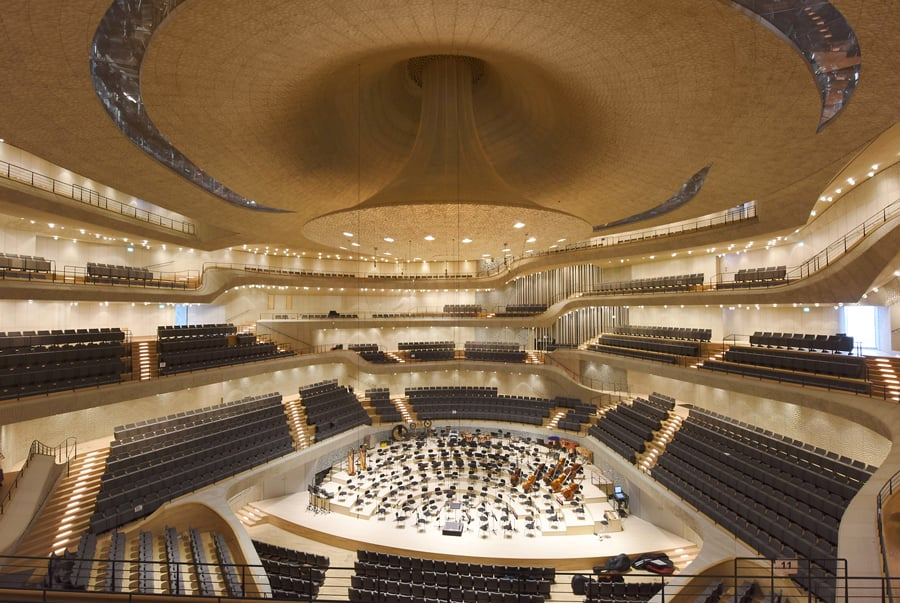
Walt Disney Concert Hall
Architected by Frank Gehry.
The angular design of the building was used to “symbolize the musical movement and motion of Los Angeles.”
Due to the mathematical complexity of Gehry’s innovative design, he relied on computer software to produce his design in a way that could be completed by contractors. The technology, called CATIA (computer-aided three-dimensional interactive application) is typically used in the design process for French fighter jets, but its mathematical ability aided Gehry in his process of designing the Walt Disney Concert Hall
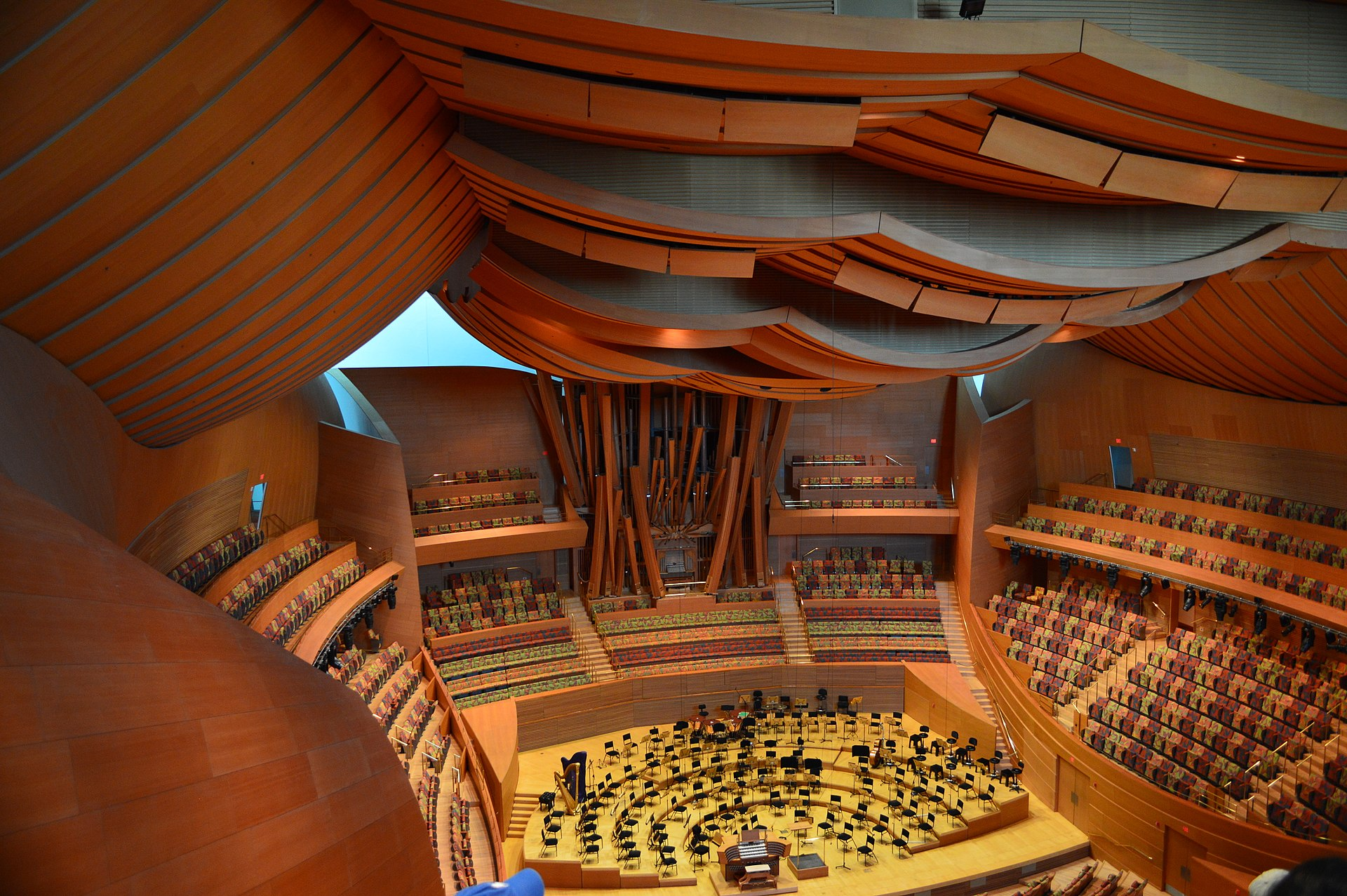 Listening to summer rehearsals Marc Swed:
Listening to summer rehearsals Marc Swed:
When the orchestra finally got its next [practice] in Disney, it was to rehearse Ravel’s lusciously orchestrated ballet, Daphnis and Chloé. … This time, the hall miraculously came to life. Earlier, the orchestra’s sound, wonderful as it was, had felt confined to the stage. Now a new sonic dimension had been added, and every square inch of air in Disney vibrated merrily. Toyota says that he had never experienced such an acoustical difference between a first and second rehearsal in any of the halls he designed in his native Japan. Salonen could hardly believe his ears. To his amazement, he discovered that there were wrong notes in the printed parts of the Ravel that sit on the players’ stands. The orchestra has owned these scores for decades, but in the Chandler no conductor had ever heard the inner details well enough to notice the errors.
Stone and Reflection
Gehry designed the hall with a facade of stone, since “at night stone would glow.” Metal at night goes dark. But after they saw Bilbao, they had to have it metal.
Some residents of the neighboring condominiums suffered glare caused by sunlight that was reflected off these surfaces and concentrated in a manner similar to a parabolic mirror. The resulting heat made some rooms of nearby condominiums unbearably warm, caused the air-conditioning costs of these residents to skyrocket and created hot spots on adjacent sidewalks of as much as 140 °F (60 °C).
The pipe organ:
Gehry’s “earliest input would have created bizarre musical results.” Some had the pipes upside down, or pipes in layers like fans, or unsuitable materials. Then they came up with a curved wood pipe, which turned out to be musically viable.
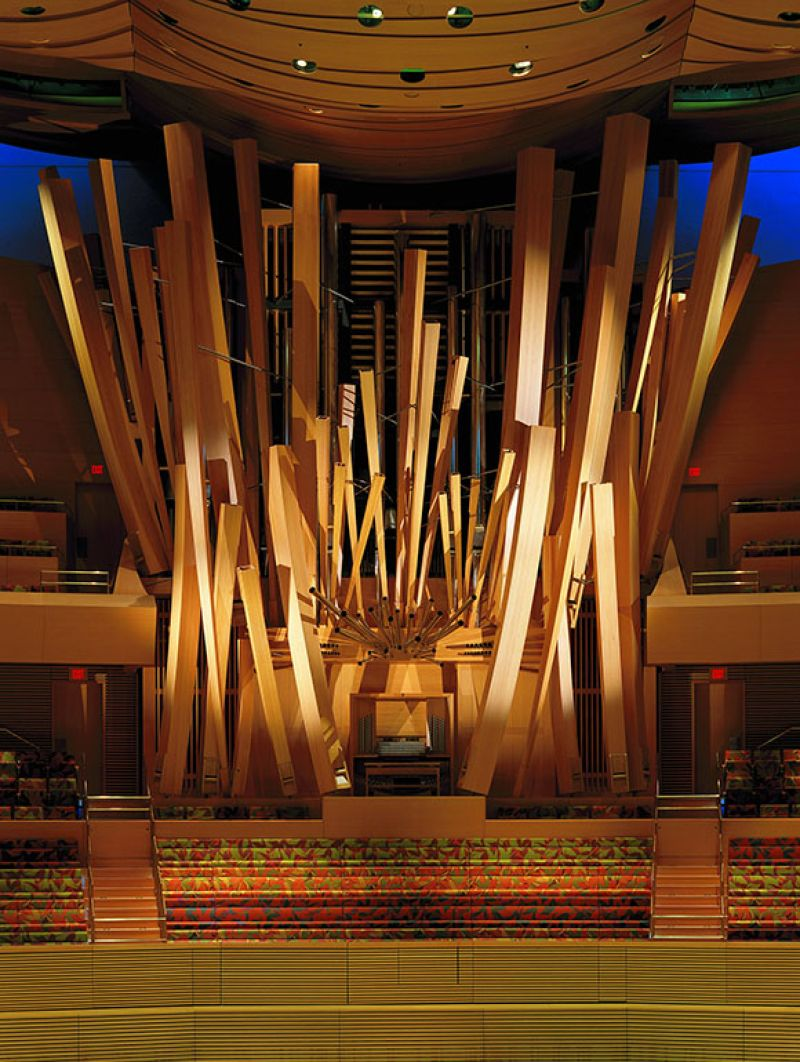
Organs
The pipe organ is the largest musical instrument.
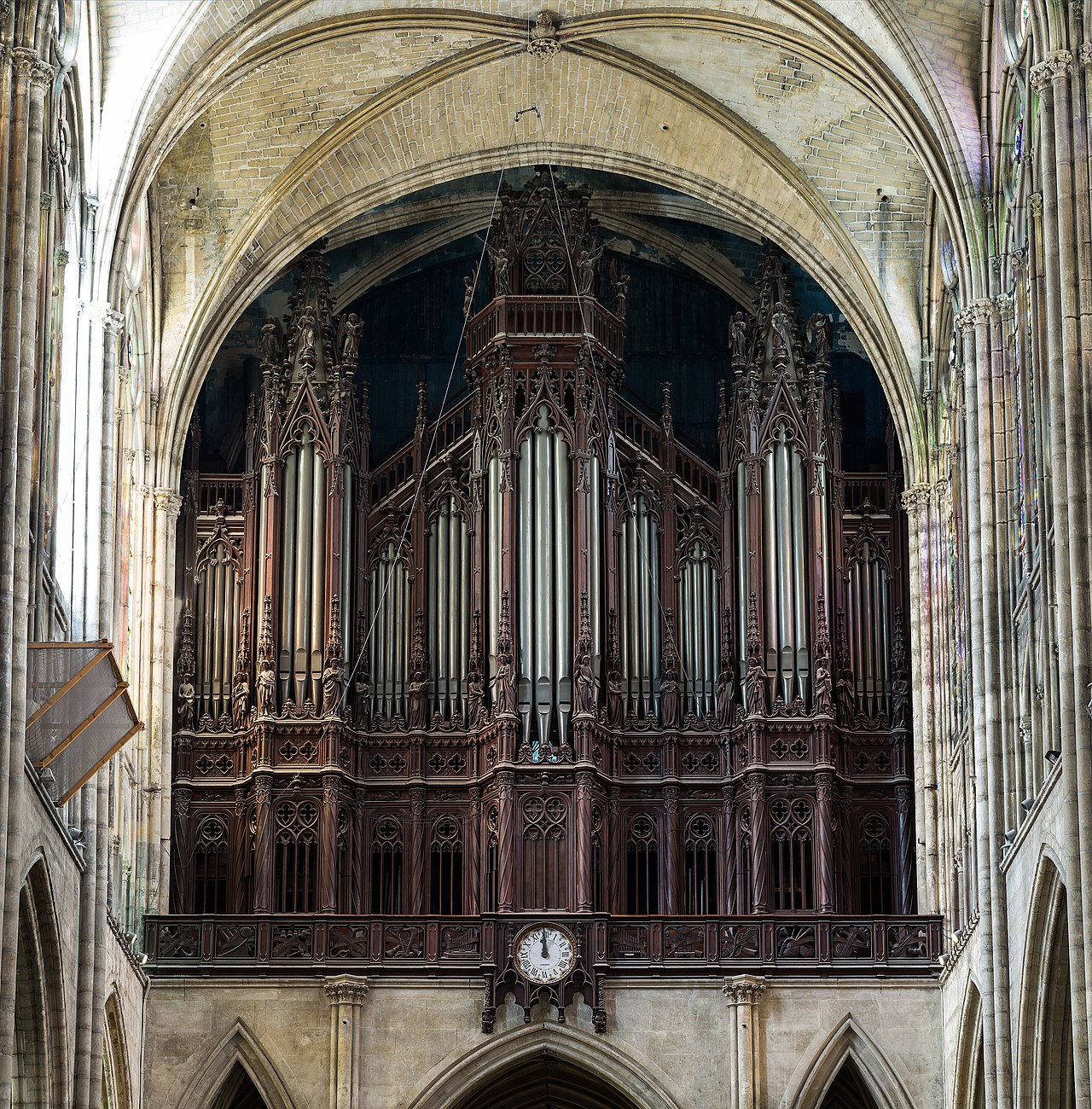
The theatre organ or cinema organ was designed to accompany silent movies. Like a symphonic organ, it is made to replace an orchestra.
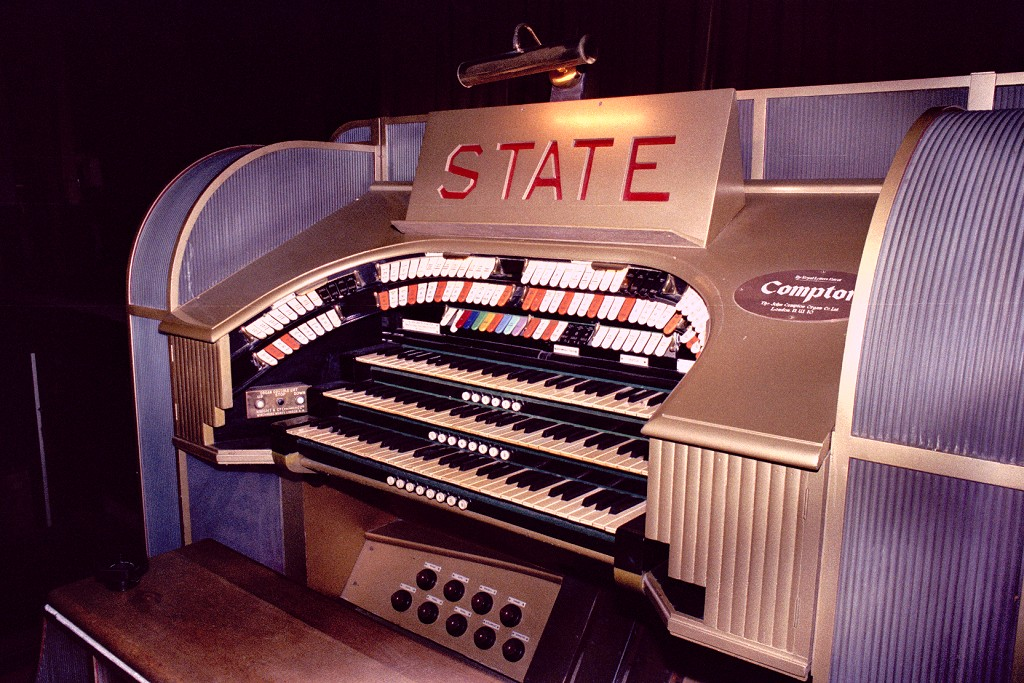
Wanamaker Organ
The largest organ, originally designed for the 1904 World’s Fair, with pipes laid out across five floors of the building.
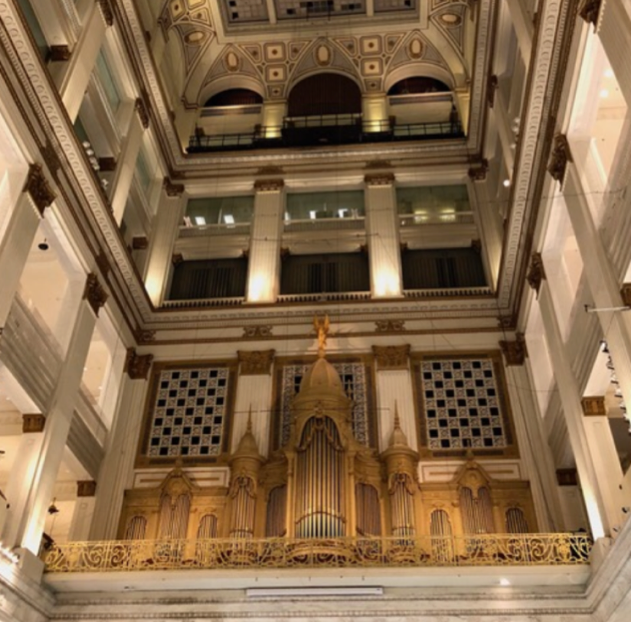
- 2nd floor south – Main Pedal 32 ft, Lower Swell, Great, Percussions
- 3rd floor south – Main Pedal, Chorus, Upper Swell, Choir/Enclosed Great, Solo, Vox Humana Chorus
- 4th floor south – String
- 4th floor west – Orchestral (adjacent to String)
- 7th floor south – Major Chimes, Ethereal, Chinese Gong
- 7th floor north – Echo
Thought
Looking at these instances of large organ projects, I find interesting connection, that I am trying to figure out some pieces about the origins of muzak and specifically music in stores (thinking PA systems, loudspeakers as musical building components — the ubiquity interests me, it’s accepted but strange).
For example, this organ was the project of a Philadelphia department store magnate and situated int he building – the centerpiece of the flagship store.
I imagine now, you have individuals who can walk through a store with headphones on, and ignore the programmed music – but this pipe organ was a structure meant to produce sound and attract attention. It was not made to be silent, the very opposite.
That’s an intriguing thought now, the building that was made to be silent, and unassuming – versus the building that is musical. Are buildings silent by nature?
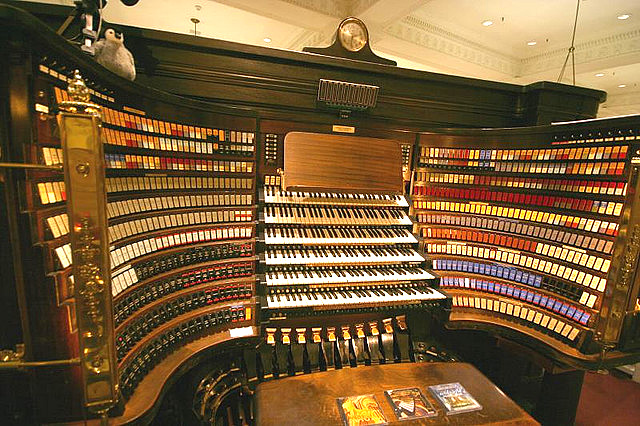
As an advocate for the arts, Rodman (like his father) believed that music would improve the experiences of both shoppers and employees; however, even with its more than 10,000 pipes, Rodman deemed the organ insufficient in size and sonority to fill the Grand Court with its warm music. He ordered an extensive enlargement, resulting in 17,222 pipes by 1917. To increase organ-expansion efficiency, an organ shop was built in the attic of the two-million-square-feet building and employed a full-time staff of organ builders. Subsequent expansions eventually produced a 287-ton organ with almost 29,000 pipes ranging from 1 inch to 32 feet in length. Although the Wanamaker Grand Court Organ’s ultimate size fell about 2,000 pipes short of the total of the Boardwalk Hall Auditorium Organ in Atlantic City, New Jersey, the Wanamaker organ remained 100 percent operational and thus became recognized as the largest playable instrument in the world. Most organs of its size and age deteriorated over time; the Boardwalk Hall Auditorium Organ, for example, maintained 50 percent functionality.
Boardwalk Hall Auditorium
The playing range is 12 Octaves 12 octaves: CCCCC to c8 – it held the record for the loudest musical instrument ever constructed.
The main auditorium space was built as the world’s largest unobstructed indoor space. Enclosing 5,500,000 cubic feet of air, and the organ runs on higher wind pressure than most organs allowing it to fill the space acoustically without amplification.
After decades of accumulated damage from water, building renovations, neglect, and insufficient funding, beginning in the 1990s a $100 million restoration program is gradually returning the organ to full operability
The organ is built around the Main Auditorium of Boardwalk Hall, although no pipes are visible from the public space. The organ’s pipe divisions are distributed across eight chambers behind the auditorium walls.
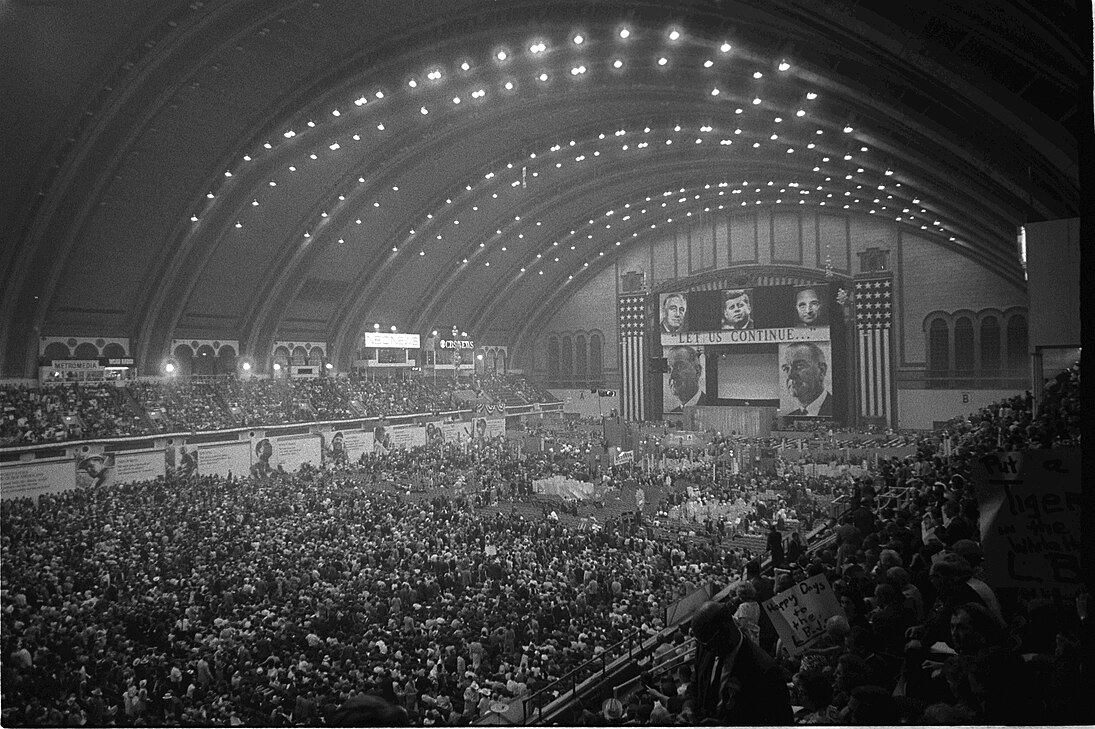
Sea Organ
The first organs were in fact water organs, including Hydraulis, from the ancient Greeks in the 3rd Century, which was played by valves.
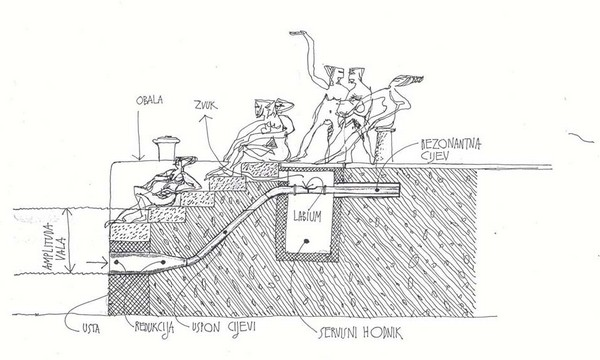 In Zadar Croatia, plays music as sea waves create music via tubes located underneath a set of marble stairs. The waves interact with the organ and create somewhat random but harmonic sounds.
In Zadar Croatia, plays music as sea waves create music via tubes located underneath a set of marble stairs. The waves interact with the organ and create somewhat random but harmonic sounds.
The project was a movement to enrich the seafront. 35 pipes are hidden under the staircase, each tuned differently.
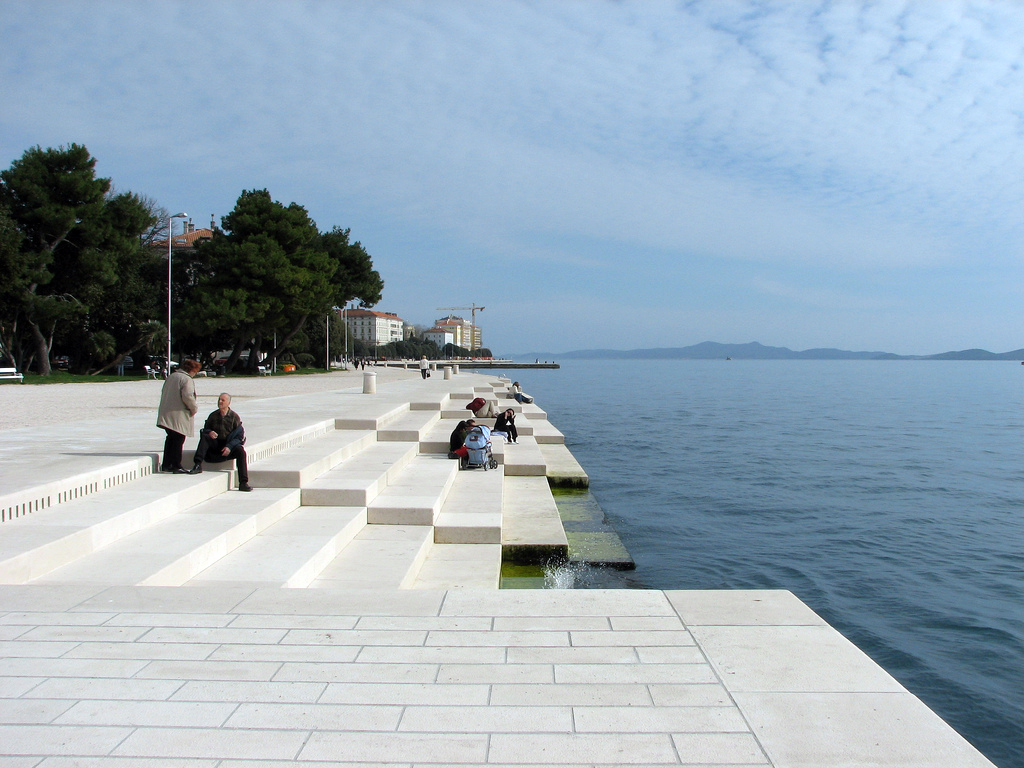
Austrian Pavilion, World Expo
The Austrian Pavilion, Expo Osaka 2025 by BWM Designers & Architects features a 91-meter spiral sculpture resembling Beethoven’s “Ode to Joy” musical staff.
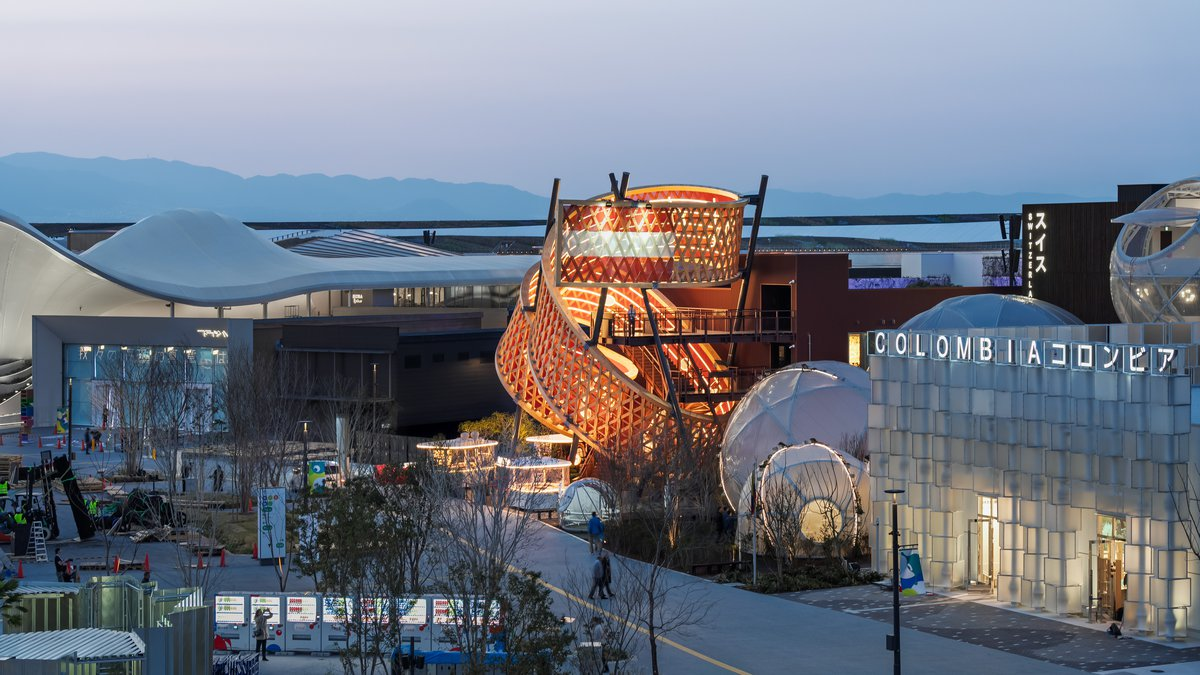
An iconic spiral sculpture rises dramatically into the air, serving as the visual centrepiece of the Austria Pavilion at the World Expo. Viewed up close, it reveals itself as an oversized wooden musical staff featuring the opening bars of the Ode to Joy.
The 91m-long, 4.3m-wide “ribbon” consists of an upper and a lower edge that are interlaced with 265 diagonal struts. The double-looped form is supported by five steel pylons and rises to a height of 16m. The inner surface of the spiral is designed as a musical staff, featuring the opening bars of Beethoven’s Ode to Joy. On the outside, the bare timber construction is on full display – complete with all its joints and structural details.
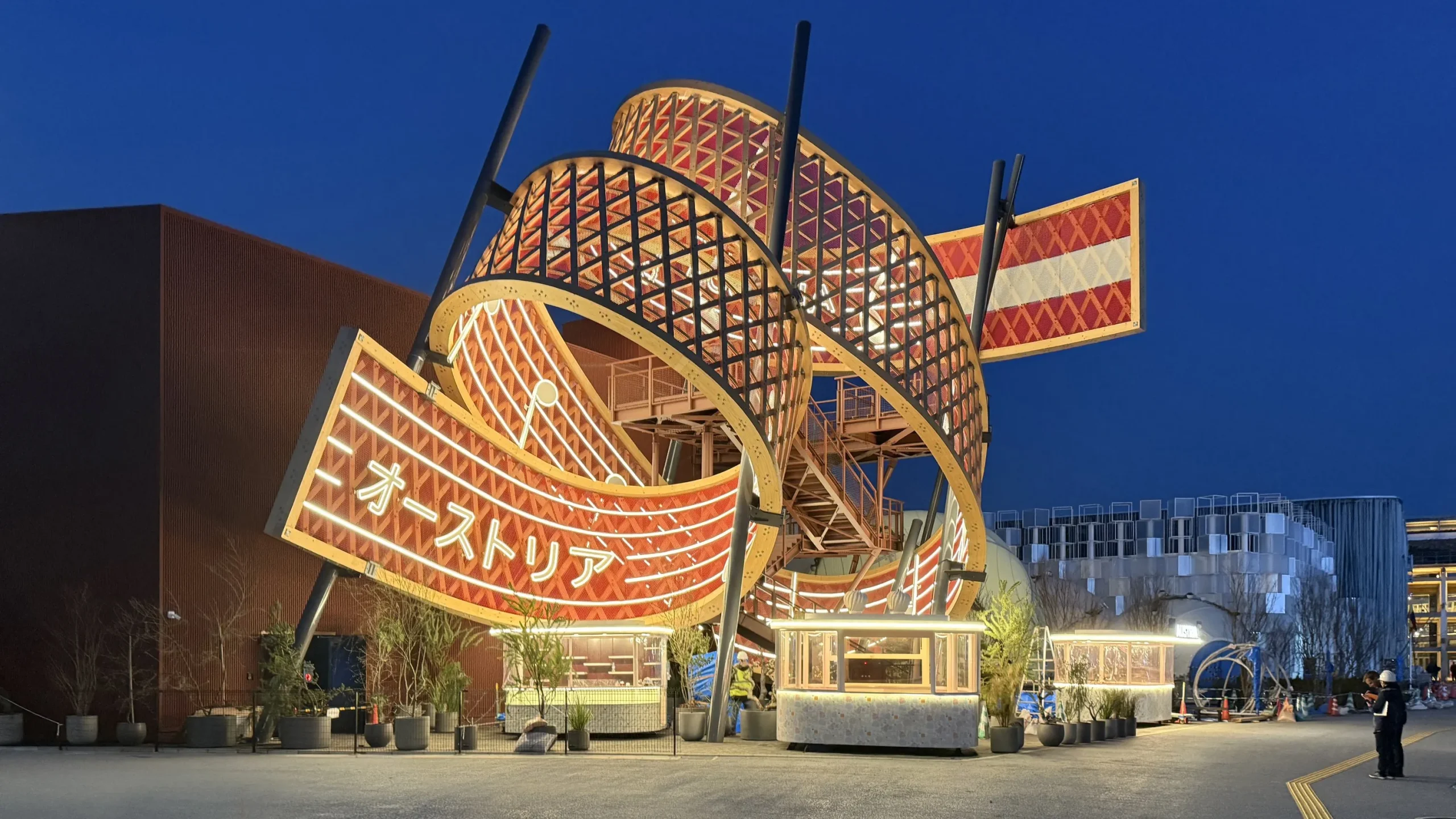
Music Box Village
In New Orleans, an interactive sculpture garden. Each house is a musical instrument.
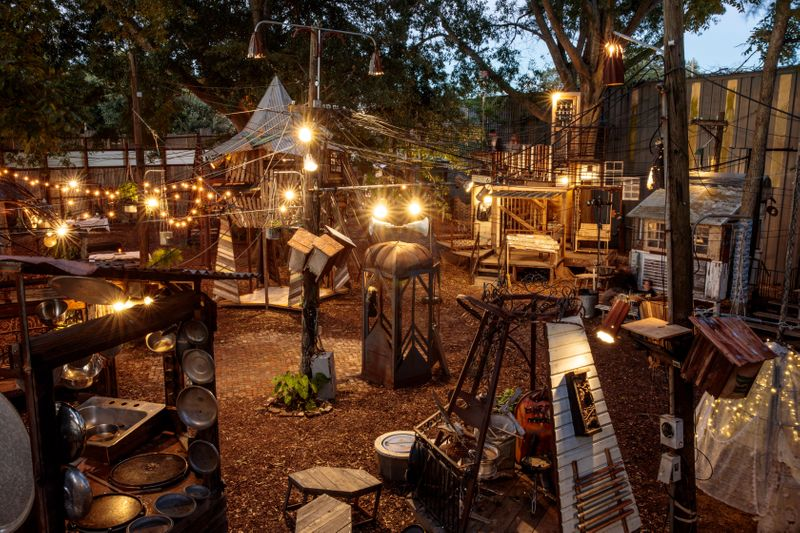
The result is a fantastical village, cloistered within a walled garden, where folks are allowed to get lost, as Martin explains, “like in the bazaars of Morocco. ” The village contains twelve “musical houses,” that have been designed and constructed by more than 85 artists, along with a cadre of about 300 musicians. The sounds of nearby riverboats and train whistles also add to the ambiance of the place.
Xenakis Iannis Art Alloys
This is Xenakis’ thesis, the central metaphor seems to be the connection of the arts and sciences, interdependent as in an alloy.
Thought
There’s a section here that intrigues me where he’s stating that the fugue is an automaton (in particular, a relative automaton).
Michel Serres: So then, why is a fugue an automaton?
Iannis Xenakis: I think that it corresponds more or less to the definition of a scientific automaton which came about in the twenties, thanks to Weiner and cybernetics. It can be summarized in the following manner: An automaton is a network of causes and effects, meaning a temporal chain of events, eventually coupled or multicoupled with certain liberties. An automaton can be closed. It suffices to plug in energy and it works cyclically. It can be relatively open, complete with data entries and external actions, thanks to the help of buttons, for example. Every time new data entries are given, an automaton can produce different results, despite the internal rigor which defines it.
Philips Pavilion
A modernist pavilion designed by the office of Le Corbusier, with project management mostly assigned to Xenakis.
It was equipped with 325 built-in loudspeakers, a device designed to lead the spectator on a “path of sound.”
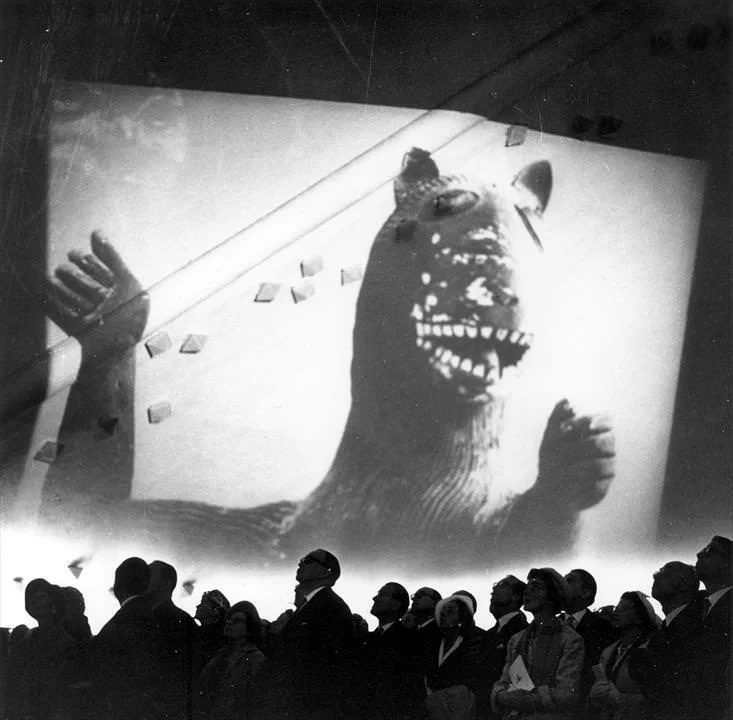
The reinforced concrete pavilion is a cluster of nine hyperbolic paraboloids in which Edgard Varèse’s Poème électronique was spatialized by sound projectionists using telephone dials. The speakers were set into the walls, which were coated in asbestos, giving a textured look to the walls. Varèse drew up a detailed spatialization scheme for the entire piece, which made great use of the pavilion’s physical layout, especially its height. The asbestos hardened the walls, which created a cavernous acoustic. As audiences entered and exited the building, Xenakis’s musique concrète composition Concret PH was heard.
Concret PH was based on the mathematical data of the construction.
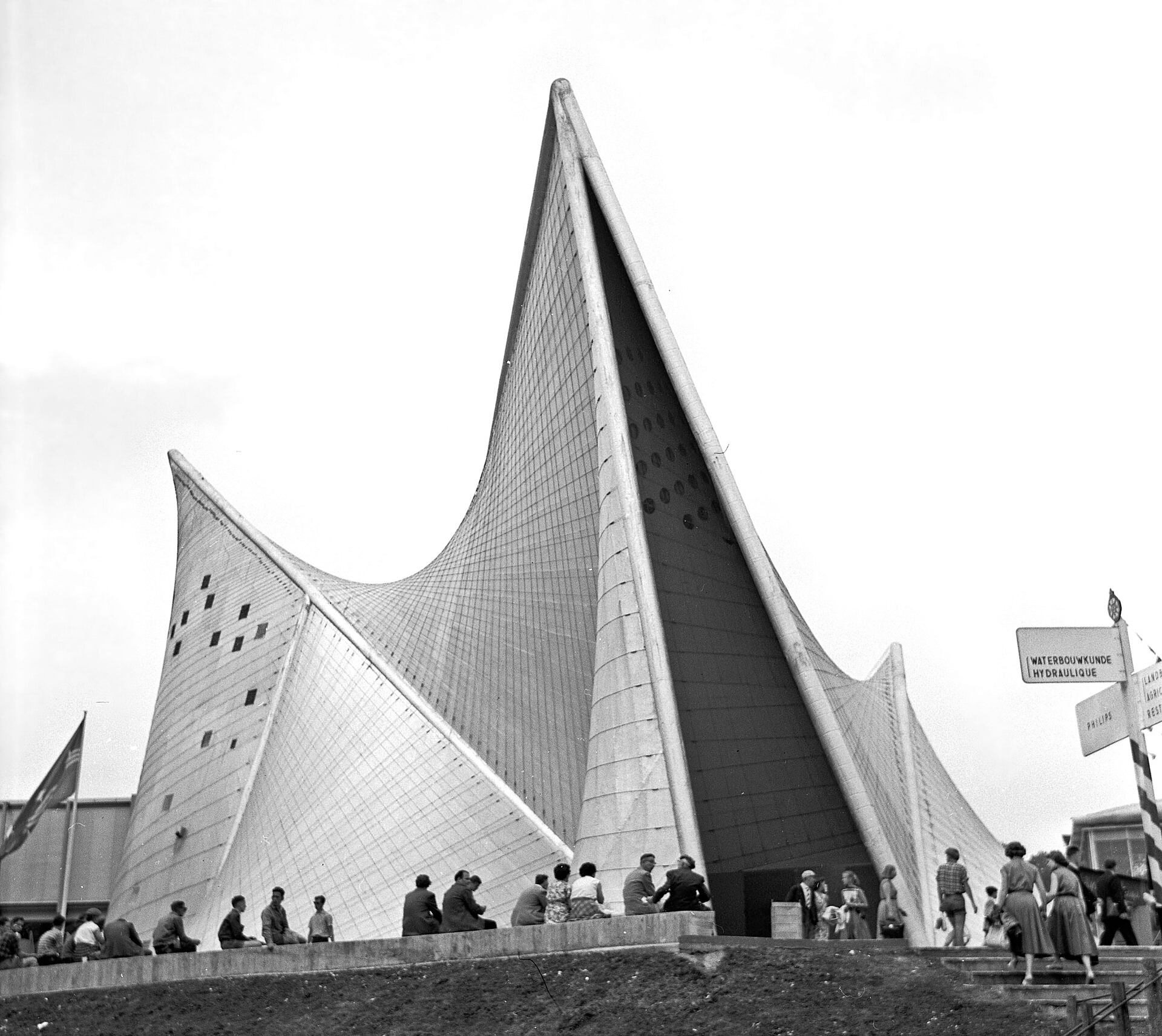
Department Stores
Department stores emerged as central institutions in the expansion of the consumer culture in the United States in the late nineteenth and early twentieth centuries, and music played an unusually prominent and varied role in these new palaces of consumption. Over the half century from 1880 to 1930 a wide range of music was presented in the stores, including elegant evening concerts conducted by such luminaries as Richard Strauss and Leopold Stokowski, afternoon programs given by professional and amateur musicians in large in-store concert halls, performances by choruses and bands made up of store employees, background music played by pianists or string quartets, and phonograph demonstrations.
Reverend Winfred Douglas
I find this address from Reverend Winfred Douglas in 1921, before the Music Teacher’s National Association, titled The Relation of Church Music to Ecclesiastical Architecture.
Some highlights:
We must find a similarity of purpose to guide us to the true relationship. The key to the beauty of a Cathedral is not in the analysis of its manifold beautiful ornament, nor of its constructive system of arches; but the observation of its perfect adaptation to its use. A Cathedral as a mere monument of carven stone is a dead thing.
As Architecture, in the Cathedral, made complete, precise, and exquisitely adorned provision for all the actions of the Liturgy; so Church Music proper, provides for all of its words.
Thought
From this find some online beef about contemporary music aspects in traditional mass, rereferring to such as “guitar mass” and decrying over-the-top musical performance.
As someone who is not religious, and finds that music unpleasant, I’d be very curious to stumble on some “guitar mass” music that I can actually be moved by.
